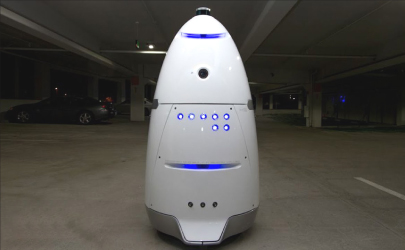Unlocking Service Potential: How Maintenance and RaaS Models Drive U.S. Security Robot Deployments

The U.S. security robots market, when analyzed by component, demonstrates a robust technological foundation and rapid transformation driven by automation, artificial intelligence, and the increasing demand for high-efficiency surveillance solutions. The hardware segment accounts for approximately 58.3% of the total market share and forms the backbone of this industry. This category includes cameras, sensors, LiDAR systems, ultrasonic detectors, GPS modules, drive systems, and advanced battery technologies. Innovations in hardware are central to enhancing mobility, durability, and real-time detection accuracy.
Advancements such as high-resolution imaging and 360-degree LiDAR scanning have significantly improved object recognition and situational awareness in various environments, both indoor and outdoor. Furthermore, the miniaturization of sensors and enhancements in battery life have reduced operational downtime, enabling security robots to conduct longer patrols autonomously. Manufacturing companies prioritize modular hardware designs to facilitate easier upgrades and customization across diverse sectors, including defense, logistics, and public safety. The continuous integration of rugged materials and weather-resistant components ensures these robots operate efficiently across airports, warehouses, critical infrastructure, and city surveillance systems, reinforcing the hardware segment’s dominant position within the U.S. security robots market.
The software segment, representing about 27.6% of the market, is rapidly emerging as a core enabler of intelligence and automation in security robotics. AI-driven algorithms, autonomous navigation software, and predictive analytics platforms empower robots to identify unusual patterns, avoid collisions, and make independent decisions during patrols. The adoption of machine learning models allows systems to enhance their threat detection capabilities based on historical data, which is particularly valuable in dynamic environments like airports, campuses, and logistics centers where human oversight may be limited. Integration of cloud-based control dashboards and edge computing enables seamless coordination among multiple robots, offering faster response times and reducing communication latency. Software developers are increasingly focused on cybersecurity measures to protect sensitive data collected during operations, addressing growing concerns as robots connect to wider surveillance networks. Additionally, subscription-based software-as-a-service (SaaS) models are gaining traction, providing users with cost-effective access to continuous updates, analytics dashboards, and fleet management tools. The expansion of AI-powered video analytics, facial recognition, and crowd monitoring features further enhances the strategic importance of software in maintaining operational efficiency and intelligence within the U.S. security robots market.
The services segment, accounting for roughly 14.1% of the market, plays a vital role in sustaining the deployment and lifecycle management of security robots. This component encompasses installation, integration, maintenance, and technical support services that ensure long-term operational reliability. As the complexity of robotic systems increases, end users in defense, healthcare, retail, and industrial sectors rely heavily on service providers for system calibration, sensor alignment, software updates, and data optimization. Remote monitoring and predictive maintenance services are essential in minimizing downtime and operational costs, particularly for fleets deployed across large-scale facilities. Additionally, specialized training programs are being introduced to equip security personnel with skills in robot operation, diagnostics, and emergency protocols. Service providers are expanding into consultancy roles, assisting enterprises in identifying the appropriate robotic solutions for specific security needs and environments. Managed services, such as robotics-as-a-service (RaaS), are reshaping the market by lowering upfront costs and enabling flexible deployment models, which is especially appealing to small and medium-sized enterprises seeking advanced surveillance capabilities without substantial capital expenditure.
The interplay among these three components is shaping the next generation of the U.S. security robots market. Hardware provides mechanical strength and sensory precision, software offers intelligence and adaptability, while services ensure seamless performance and user satisfaction. The growing synergy among these elements is paving the way for fully integrated autonomous security ecosystems capable of 24/7 surveillance, real-time data analysis, and coordinated threat response. As robotics and AI technologies continue to evolve, future developments are expected to focus on enhancing interoperability between different robot types and security systems, allowing centralized command centers to manage hybrid fleets more efficiently. The convergence of AI, 5G, and cloud robotics will further accelerate this transformation.